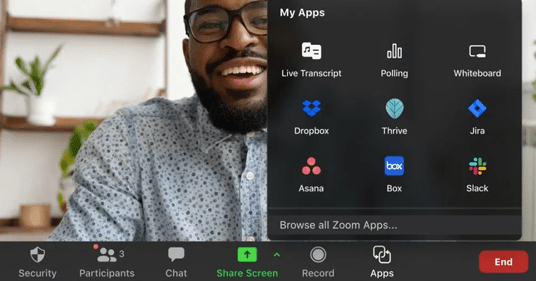HRTech
The difficult second album. Advice for HRTECH vendors.
Warning: long, rambling metaphor. Readers of my blog and twitter feed will have seen that I have an interest in music. One of my favourite albums is the first Stone Roses Album, The Stone Roses. I play this record a lot. Here is the song, Waterfall, from the album.
The wikipedia entry is worth a scan, But have a listen to the album ,or, better, buy it from your local record stone. There is an interesting back-story about album cover. The band’s second album was not nearly so successful, it failed for a number of reasons. It was way late, the market had shifted with Oasis and other britpop bands , massive expectations, band stress, maybe arrogance, record company pressure and so on. It probably didn’t deserve the level of criticism it received, and the band didn’t survive the fall out.
As the Guardian noted,
This is the acme of Difficult Second Albums. Over five years after their epochal debut, the Stone Roses emerged from tortuous recording sessions, sounding like a baggy Led Zeppelin, to find that fellow Mancunians Oasis had stolen their thunder. There was no second chance either; they hated each other so much that they split up before they could record another note. In retrospect, the title’s inferred comparison to the resurrection of Jesus, however ironically meant, was perhaps unwise. https://www.theguardian.com/music/2003/sep/19/3
The first album’s influence remains massive, nevertheless.
The difficult second album syndrome is well known in the music industry, but there are many exceptions to the rule. Some bands have a second album that is better than their first, some lurk in obscurity for ages, and then have breakthrough. Radiohead’s first album, Pablo Honey , had one massive hit, Creep. With the second album, Bends, they changed style dramatically, becoming far less grudge like, and pioneering more complex electronic music. They have since become one of the most successful bands of the last 25 years, commercially and critically. Some second albums build on the success of the first, driving new sales of the first album too, and establishing and expanding a loyal fan base, who then buy the third/ fourth album. With Elbow, I heard one of their later albums, and then bought the back catalogue. Tears for Fears was that band I liked before most my friends had heard of them, and then when Songs from the Big Chair came out, I kept telling people how great the first album was. This was probably quite irritating.
But the second album is a challenging endeavor.
Well, what has this to do with HRTECH software?
When you have a successful niche product, you eventually need to make decisions about what to do next. Perhaps the niche product alone isn’t enough to sustain the expectations of the investors or the market, so you think about additional products. Sometimes the innovation of the first product begins to be duplicated by larger vendors, and is eventually subsumed into a suite offering. Increasingly, there is the option/temptation of being acquired by a larger vendor too, or perhaps to make your own acquisitions. You and your team may also be brimming with ideas of new products you could be building. Maybe you have vision and ambition to grow from being a niche vendor into some sort of suite.
There are a couple of good videos on SaaStr about this challenge.
When Should You Add a Second Product?
How, When and Why to Launch a Second Product: A Deep Dive with Dharmesh Shah, CTO Hubspot
I’d urge you to watch them.
Before you charge off and build an additional product, I suggest you ponder the following.
- Why are you doing it? Have you identified a real market gap, or are you just copying what others are doing?
- Is the new product derivative or is a radical departure from what you have done before? (McKinsey Horizon 2 v Horizon 3).
- Do you need to build or should you acquire?
- Can your product and engineering cope with the prioritization of two products, what changes will you need to make to the organization?
- You aren’t an unknown start up anymore, so customers will have different expectations of MVP.
- Are you prepared to disrupt your existing product and its positioning?
- Will your salesforce and marketing function be able to position two or more products?
- Are you building additional features on top of your existing product and commercializing them, or are you really building a new product?
- Are there obvious cross-sell opportunities?
- Will the new product expand the addressable market for the current product?
- In 2 years time do you expect the new product to have a bigger ARR than the current product?
- Will this be the first of several new products?
- How will this disrupt existing partnerships, alliances and integrations?
You have a bunch of advantages building a second product
- You have existing customers you can ask. This is especially effective if you plan to build a product that sells to the same, or an adjacent buying centre.
- You have funding, or easier access to it. If you don’t then you have a different set of problems.
- You can find early adopters easily.
- You have engineers and product managers that have HRTECH competence (security, data model etc)
- You have platform features you can leverage.
- You have a marketing function with established HRTECH channels, analyst relations, mailing lists, influencers etc. You have brand.
- You have partners, for instance SIs, that can help drive sales and adoption.
You have some risks.
- You take your eye off the product that has made you successful so far, and alienate those customers.
- You over-assume the team that built the first product is capable of building the next. In musical parlance, do you need a new producer?
- You replace the original team with too many “enterprise” hires, losing your original spark.
- Your first success makes you arrogant, and you underestimate the competition and customer expectations.
- You spend too long in analysis paralysis, and over think the MVP, arriving too late, and distant from genuine customer need.
- You build on the older, familiar stack, but you add to your technical debt.
- You don’t figure out how to communicate that the combination of your first and second product together makes a more compelling offering. Your marketing can’t navigate the niche to portfolio transition.
- Your sales folks are less comfortable leading with the new product, and lurk in nostalgia mode.
- Selling to a new buying centre is not always easy.
- You damage existing partnerships with other vendors
I’d also urge you to read Anshu’s stack fallacy post. I see this playing out in HRTECH too. ATS vendors think it is easy to build candidate engagement. Learning vendors think performance management is theirs for the taking, and payroll vendors think that building HR is really simple because they know payroll and payroll is complicated. Core HR vendors tack on a survey tool, and they reckon they have employee engagement nailed. Talent management vendors think core HR is straight-forward. Everyone seems to think they can do internal mobility solutions.
So building additional products requires you to develop a new set of skills, and your ability to prioritize will need to step up dramatically, and it will change your company far more than you imagine. Don’t do it just because your VC reckons you should. For many niche vendors, the best option is to remain a niche vendor. Do that one process better than anyone else does, and ignore the clarion call to expand. One awesome album is a pretty fine thing.
I’ll leave you with one of my favourite examples of a band that coped with massive adversity and metaphorized into something new and equally special. The story of how Joy Division became New Order, in the wake of Ian Curtis’ death is quite remarkable. Here is the New Order song, Blue Monday. It is the best selling 12″ single of all time, and an immense influence even today.



